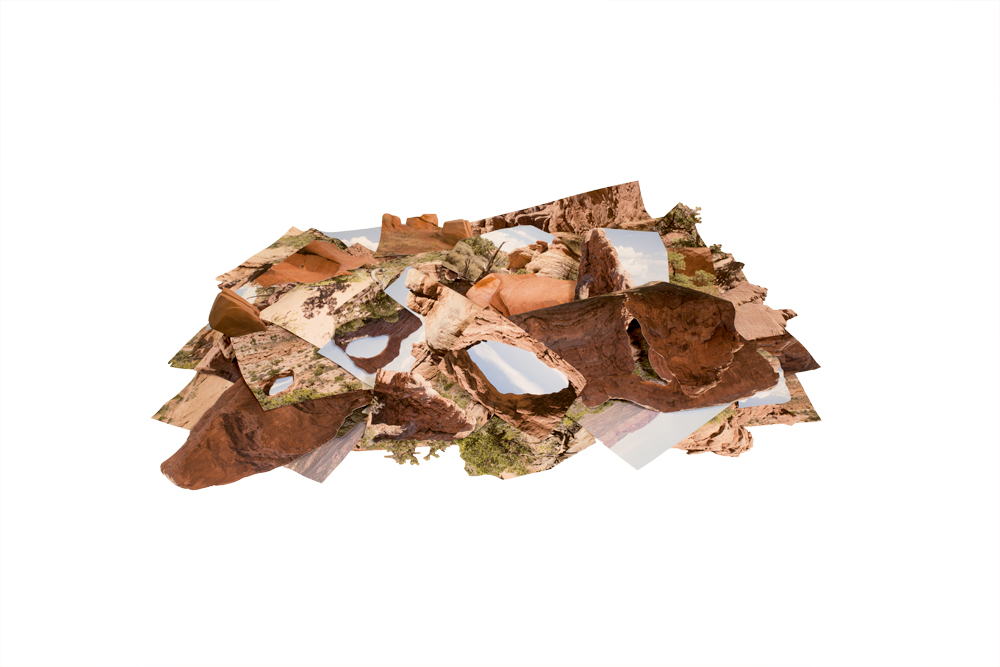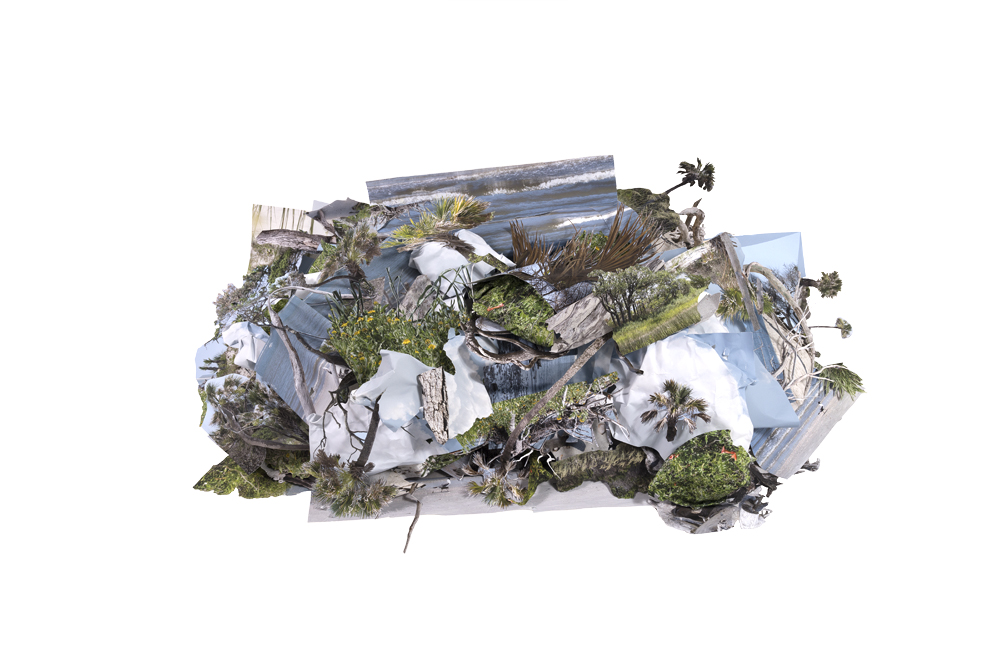Amanda Musick: New Vistas: Photographers working with the Landscape
Growing up in Los Angeles, much of my consideration of landscape came from the faux realities of stage sets and created worlds within Disneyland. The happiest place on earth imprinted the Matterhorn and the Grand Canyon on my psyche long before I ever experienced them in person. I met photographic artist Amanda Musick at CENTER’s Review Santa Fe this past October, and her work brought me right back to my childhood. She uses large scale photographs of landscapes to recreate or create place, constructed dioramas that speak to the physicality of photographic images. We cannot enter these three dimensional spaces, but our senses react to their presence.
Amanda will be sharing other artists working with landscape this week.
Amanda Musick is a photography-based artist living in Clemson, South Carolina. Musick uses photography and sculpture exploring how a photograph can operate to represent the landscape. In her studio practice she uses photographic prints and assembles them into forms that investigate our relationship to natural and artificial environments. She received her BFA in Studio Art from East Tennessee State University and her MFA in Photography from Clemson University in Clemson, South Carolina in 2018. Musick recently completed the artist-in-residence program at Anderson Ranch Arts Center.
Land Unfolding
Land Unfolding examines the natural environment and the ways in which a photograph can function to represent place. The dichotomy of artificial and natural environments is explored through using photographs I made in real landscapes to construct new, illusive vistas and forms.
Landscape collages are created through a process of deconstructing and assembling multiple photographs to reconstruct another single view of the original landscape. The landscape piles are made from the deconstructed remains of the collages. The way in which these pile forms float in space portray a sense of loss, void, and skewed reality. The processes of deconstruction and reconstruction I employ speaks to our continually changing landscape as well as our attempt to preserve and piece it back together.
Posts on Lenscratch may not be reproduced without the permission of the Lenscratch staff and the photographer.
Recommended
-
Ragne Kristine Sigmond: Portraits of Painterly LightDecember 2nd, 2025
-
Mary Pat Reeve: Illuminating the NightDecember 1st, 2025
-
Ricardo Miguel Hernández: When the memory turns to dust and Beyond PainNovember 28th, 2025
-
Pamela Landau Connolly: Columbus DriveNovember 26th, 2025
-
MATERNAL LEGACIES: OUR MOTHERS OURSELVES EXHIBITIONNovember 20th, 2025







































































